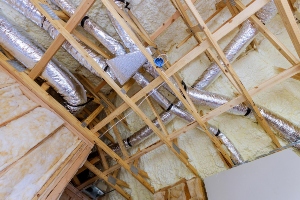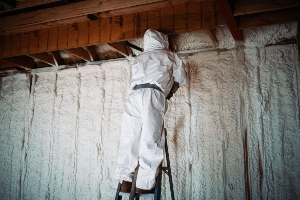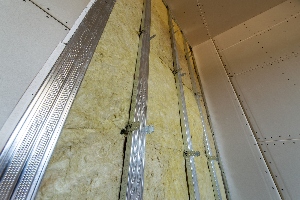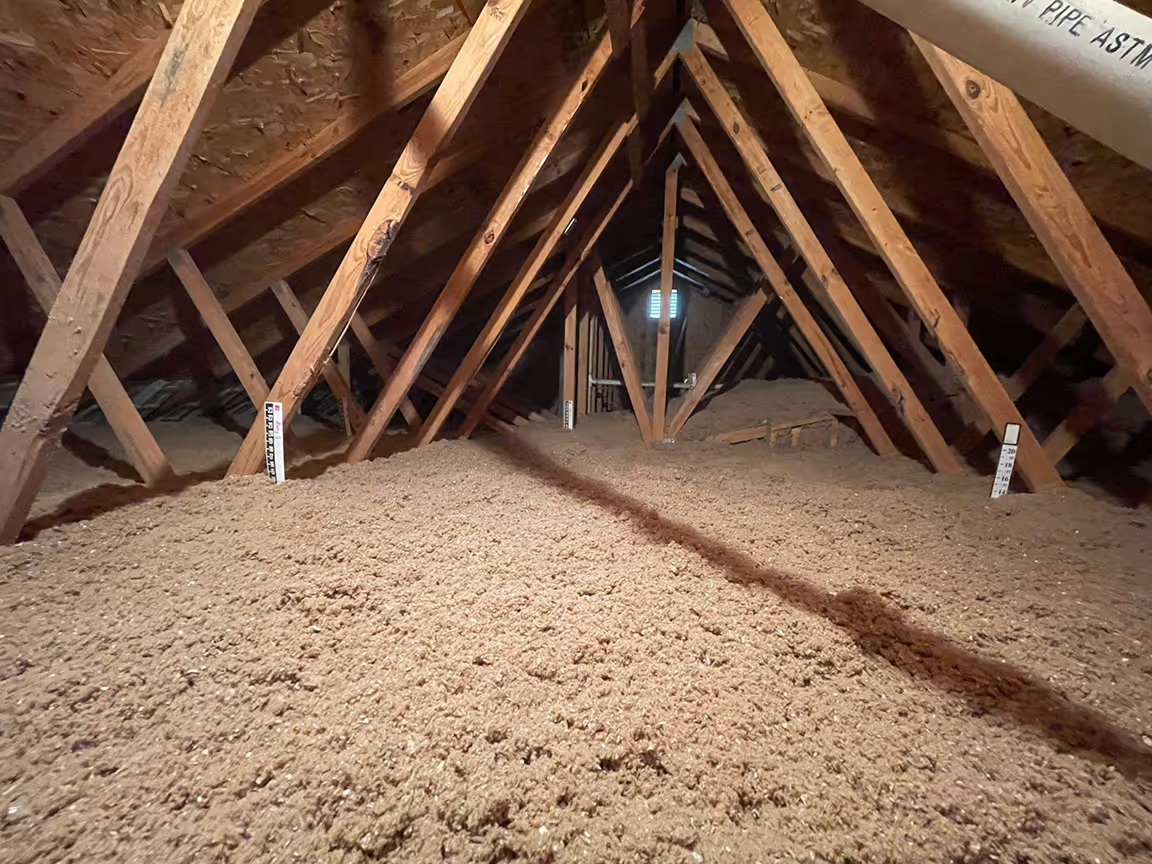Investing in insulation might seem costly, and many homeowners wonder if the initial expense is worth it. The answer is yes – properly sealing and insulating your home can save you up to 45% on energy costs during summer while maintaining cool, comfortable temperatures inside.
Beyond the financial benefits, proper insulation helps maintain consistent temperatures throughout your living space and avoids hot spots that often occur in poorly insulated homes during summer. Our customers frequently tell us they notice the difference in comfort immediately after upgrading their insulation.
Understanding Insulation and its Impact on Energy Efficiency
Insulation helps maintain comfortable indoor temperatures while reducing energy consumption – an affordable and effective upgrade for any home.
The Role of Insulation in Maintaining Indoor Climate
Insulation slows heat transfer between your home and the outside environment. In winter, it keeps warm air inside your home. In summer, it blocks hot air from entering your cool indoor spaces. Think of insulation as a thermal barrier that works year-round.
Without adequate insulation, your heating and cooling systems must work harder and run longer to maintain comfortable temperatures. Most homeowners only focus on winter benefits, but summer insulation is equally important. When outdoor temperatures soar, properly insulated walls, attics, and floors prevent heat from radiating into your living spaces.
This protection maintains a more stable indoor climate so your air conditioner runs less frequently, reducing wear and tear on your HVAC system.
How Proper Insulation Leads to Energy Savings
The financial benefits of good insulation are substantial, as research shows that a properly insulated home can reduce energy consumption by 30-50%, translating to significant savings on monthly utility bills. This efficiency comes from reduced thermal transfer. When less heat moves through your walls, ceilings, and floors, your heating and cooling systems operate more efficiently.
For example, during hot summer months, uninsulated attics can reach temperatures of 150°F or higher. This extreme heat radiates downward into living spaces, forcing air conditioners to work overtime. With proper attic insulation, this heat transfer is minimized. The same principle applies in winter, when insulation prevents warm air from escaping upward through the ceiling.
The cost of adding or upgrading insulation typically pays for itself within 3-5 years through energy savings.
Evaluating Insulation Materials and R-Values
When selecting insulation, the R-value is your most important consideration. R-value measures resistance to heat flow – higher numbers indicate better insulating properties. Different climate zones require different R-values. For most homes, attics should have R-38 to R-60, walls need R-13 to R-21, and floors should have R-25 to R-30.
Common insulation materials include:
- Fiberglass: Affordable and widely available
- Cellulose: Made from recycled paper products, environmentally friendly
- Spray foam: Excellent air-sealing properties, high R-value per inch
- Rigid foam boards: Good for basements and exterior walls
Each material has advantages and limitations regarding cost, installation requirements, and performance.
Reducing Cooling Costs with Effective Insulation
Proper insulation helps homeowners save significant money on cooling expenses during summer months. The U.S. Department of Energy reports that effective insulation can cut heating and cooling costs by up to 20%.
Preventing Heat Gain and Loss in Summer
Think of insulation as a protective shield that maintains cool indoor temperatures despite the scorching heat outside. This barrier significantly reduces the workload on your air conditioning system. A well-insulated home maintains consistent temperatures throughout the day, eliminating those uncomfortable hot spots that often appear in poorly insulated spaces.
The attic deserves special attention since it can reach temperatures of 150°F during summer days. Attic insulation prevents this superheated air from radiating downward into your living spaces. Wall insulation is equally important, blocking heat that would otherwise conduct through exterior walls during those long, hot summer days.
Insulation Techniques for Cooler Summers
Reflective insulation and radiant barriers work exceptionally well in hot climates. These materials reflect radiant heat away from your living space rather than absorbing it. Combine this with spray foam insulation, which provides excellent sealing properties to block tiny air leaks. These leaks might seem insignificant, but collectively can let substantial amounts of hot air infiltrate your home.
Professional air sealing paired with insulation upgrades can reduce energy usage by up to 45%. This combination addresses both conductive and convective heat transfer.
Enhancing Cooling Systems with Insulation
Insulating your ductwork prevents cooled air from warming as it travels through hot attics or crawlspaces. This simple step ensures the cool air your AC produces reaches your living spaces at the intended temperature. Well-insulated ducts can improve cooling system efficiency by 10-30%. This translates to direct savings on your monthly bills and extends the lifespan of your HVAC equipment.
Also, consider these additional strategies:
- Install insulated window treatments to block solar heat gain
- Use weatherstripping around doors and windows
- Insulate hot water pipes to reduce ambient heat
The Long-Term Advantages of Insulating Your Home
Proper insulation offers benefits that extend far beyond seasonal comfort. Investing in quality insulation creates lasting value through significant cost savings and increased property worth.
Lowering Utility Bills and Long-Term Energy Costs
Insulation dramatically reduces energy expenses year-round. A well-insulated home needs less heating in winter and less cooling in summer, cutting utility bills by 15-20% on average. This translates to hundreds of dollars saved annually.
The math is simple: less energy needed means lower costs. Modern insulation materials can last 20-30 years without replacement, creating thousands in savings over their lifetime. Insulated homes require less strain on HVAC systems, reducing maintenance costs and extending the life of expensive equipment by 2-5 years.
The initial investment typically pays for itself within 3-5 years, making insulation one of the most reliable home improvements for consistent returns.
Increasing Home Value with Quality Insulation
Quality insulation significantly boosts your home’s market appeal, and recent real estate studies show that energy-efficient homes sell for 2-6% more than comparable properties without proper insulation. Buyers increasingly prioritize energy efficiency when house hunting due to lower operating costs.
Home inspectors and appraisers specifically note insulation quality in their reports. R-values meeting or exceeding regional recommendations become selling points that justify higher asking prices. Investing in premium insulation materials can yield a 100% or greater return on investment at resale.
This makes insulation improvements one of the few home upgrades that can fully pay for themselves while providing years of comfort and savings. Get in touch to arrange an energy audit of your home to identify any insulation gaps or air leaks.





